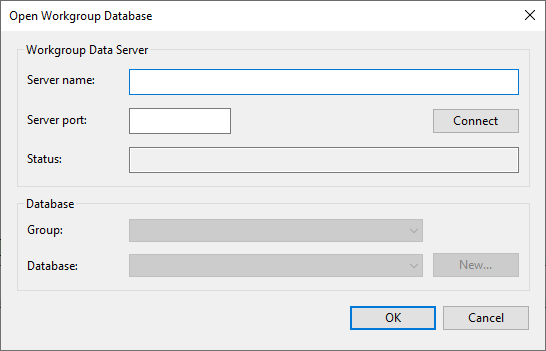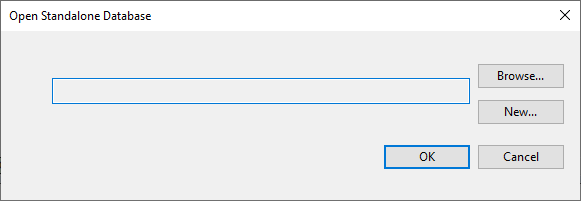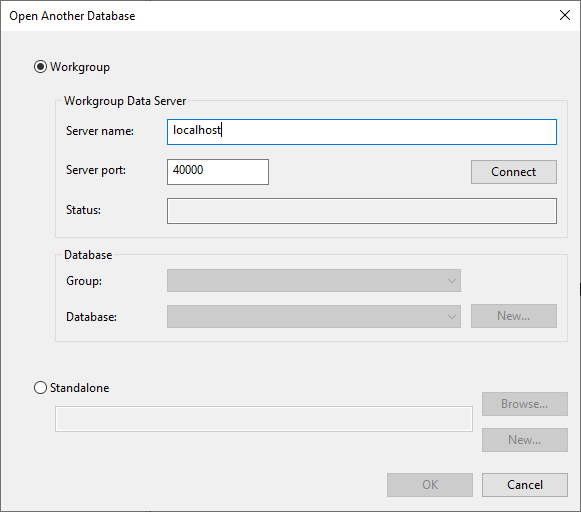The Open Database dialog is used to open an existing cloud and on-premise database, create a new cloud and on-premise database, or update a selected cloud and on-premise database.
Open/create database, open another database, and update database
The dialog is displayed by:
-
Selecting File | Open | Open/Create database or Open another database, and selecting an option in the Open/Create dialog.
-
Selecting File | Database update | Update database, and selecting an option in the Open/Create dialog.
Workgroup Database

| Group | Description | ||||||||
|---|---|---|---|---|---|---|---|---|---|
| Workgroup Data Server |
|
||||||||
| Database |
|
||||||||
| Update to |
Displayed when updating a database. Lets you choose which version of the database that you want this database to be updated to. The available versions are listed in the drop-down list. Note: The oldest version available is 2023.0.
|
Standalone Database

| Field | Description |
|---|---|
| (text box - read only) | Shows the name of the standalone database, if one has been selected. |
| Browse | Opens a standard Windows Open dialog that you can use to find an existing standalone database. |
| New | Opens a standard Windows Save As dialog with a suggested location and name for a new standalone database. You can change the location and name if you want to. |
| Update to |
Displayed when updating a database. Lets you choose which version of the database that you want this database to be updated to. The available versions are listed in the drop-down list. Note: The oldest version available is 2023.0.
|
Cloud Database

| Field | Description |
|---|---|
| Hub | A drop-down list that displays the hubs of all existing cloud databases. |
| Database | A drop-down list that displays the names of all existing cloud databases. |
| New | Opens the New Database dialog, in which you can specify the name for a new cloud database. |
| Update to |
Displayed when updating a database. Lets you choose which version of the database that you want this database to be updated to. The available versions are listed in the drop-down list. Note: The oldest version available is 2023.0.
|
Get database identifier
The dialog is displayed by:
-
Selecting File | Database settings | Get database identifier, in order to allow a database identifier (for a database to which the user does not have access), to be saved to a text file. See User Permissions for further information.

Aside from the fields described in the tables above, the following options are also applicable.
| Option | Description |
|---|---|
| Update to |
Displayed when updating a database. Lets you choose which version of the database that you want this database to be updated to. The available versions are listed in the drop-down list. Note: The oldest version available is 2023.0.
|
| OK | Saves any changes to the dialog and closes the window. The selected database will be opened in the Explorer window. |
| Cancel | Cancels any changes to the dialog and closes the window. |
